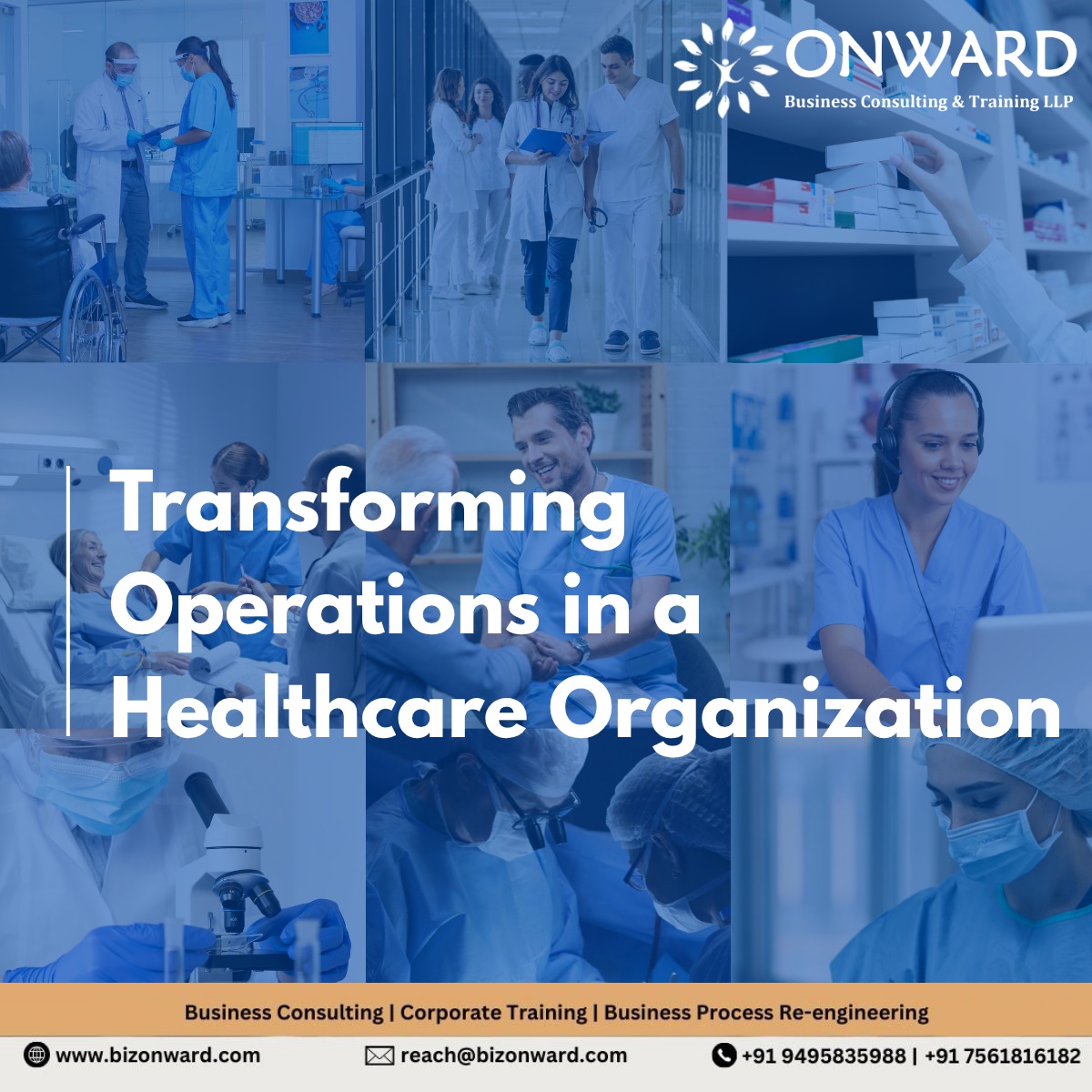Transforming Operations in a Healthcare Organization
A leading healthcare organization approached us to enhance operational efficiency, streamline workflows, and improve overall quality of service.
The client is a well-established and rapidly growing healthcare organization, widely respected for its commitment to delivering high-quality, patient-centered care. With a strong foundation of clinical excellence and a dedicated team, the organization has consistently prioritized service standards and community well-being.
Our Approach
Our approach begins with one-on-one discussions and in-depth departmental studies to understand how each function operates in practice. Through continuous interaction with stakeholders and on-ground observations, we identify practical gaps and co-develop solutions that are both relevant and sustainable. This ensures every intervention is rooted in real context, not assumptions.
Key Interventions
- Process Enhancements
We identified operational bottlenecks through focused discussions with staff and department stakeholders. A series of structured meetings were held to understand ground-level challenges, gather feedback, and document existing workflows. Based on this each major activity was analyzed and redefined for clarity and efficiency. Standard processes were developed for core functions such as patient intake, discharge, housekeeping rounds, documentation, and interdepartmental communication. SOPs and checklists were created to ensure clarity in execution and minimize delays or confusion. - Performance Monitoring
We implemented a holistic performance monitoring system by establishing clear KPIs for every role, based on job function and departmental goals and also on core competencies. - Employee Development
Skill development was prioritized through department-specific training initiatives. Using interactive methods like role-playing, real-case scenarios, and peer feedback to ensure engagement and learning retention. Implementing pre- and post-training assessments to track improvement and identify further learning needs. - Standardized Documentation
Inconsistent record-keeping was addressed by introducing standardized formats across departments. We developed customized forms and registers aligned with each department’s workflow and reporting needs. Ensuring each form supported the newly standardized processes for clarity and compliance. - Redefined KRA, KPI, and Job Responsibilities
To eliminate ambiguity and improve accountability every role was mapped with clear Key Result Areas (KRAs) and Key Performance Indicators (KPIs). The Job responsibilities were restructured and aligned with organizational goals, a clear communication helped employees understand what is expected, why it matters, and how performance will be measured. - Recognition and Rewards
To foster motivation and acknowledge consistent effort, we introduced a Reward Program based on a 360-degree evaluation, which includes Department head’s assessment, Peer feedback, HR observations and Management inputs. The recognition categories covered both performance and professional behavior.
Impact and Outcomes
The interventions led to noticeable improvements across several operational areas. Processes became more streamlined, helping departments work with greater clarity and consistency. Employees showed increased focus and accountability, supported by clearer expectations and relevant training. Patient and visitor experiences improved as a result of better communication, cleaner environments, and faster response times. Service quality became more consistent through structured documentation and regular monitoring.
Conclusion
This consulting engagement demonstrated how structured, context-driven interventions can lead to meaningful improvements in healthcare operations. By combining department-level analysis, continuous stakeholder interaction, and real-time observation, we were able to design practical solutions tailored to the organization’s needs. The introduction of clear performance evaluation systems, improved interdepartmental communication, and active employee participation not only enhanced operational efficiency but also strengthened ownership and accountability across the team. These changes have laid a strong foundation for ongoing collaboration and continuous improvement.

